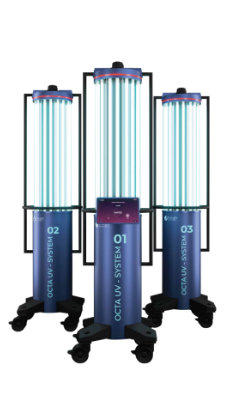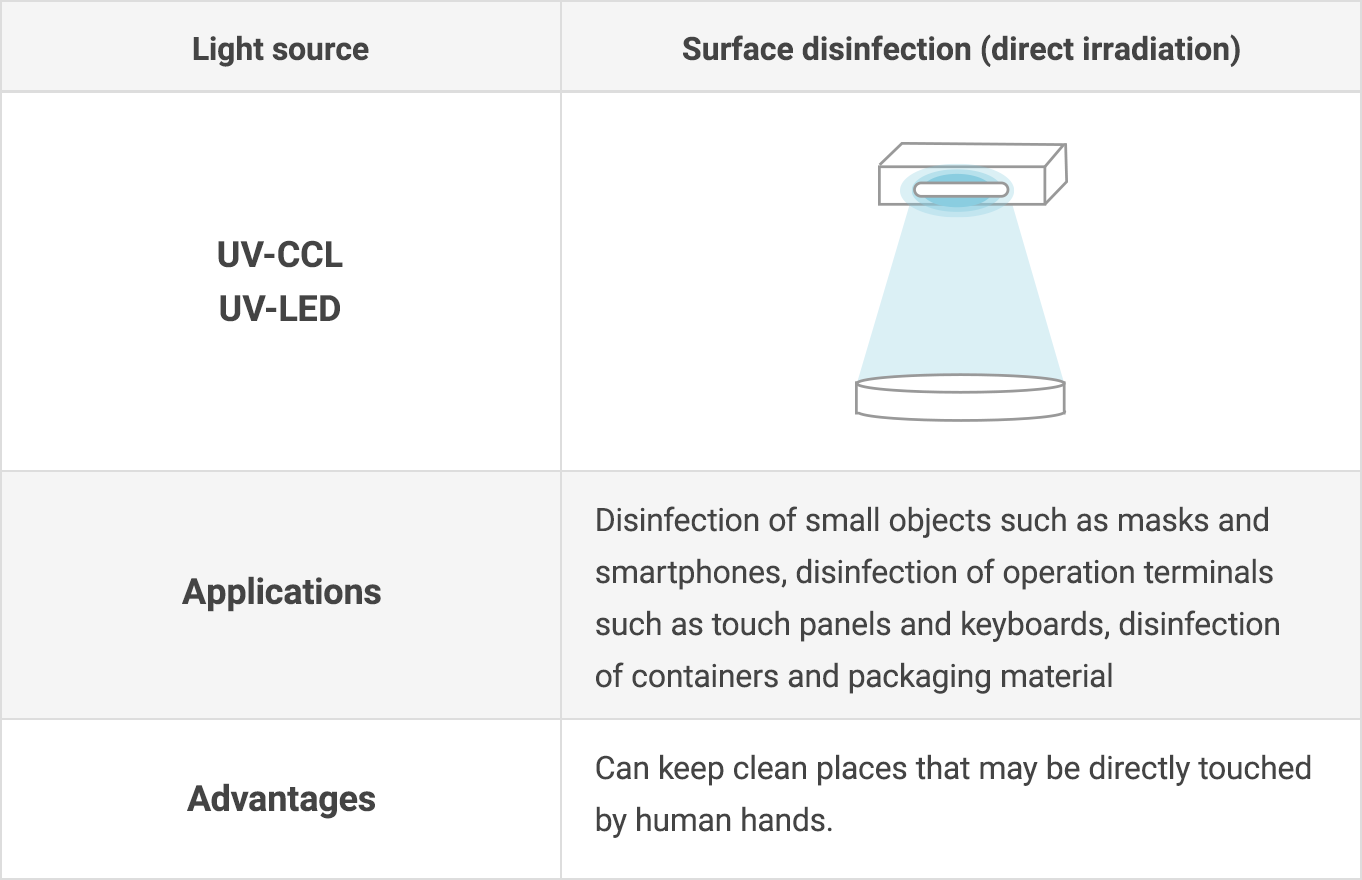Far-UVC UV Sanitizers: Changing Sanitation Standards for a Safer Environment
Far-UVC UV Sanitizers: Changing Sanitation Standards for a Safer Environment
Blog Article
Much UVC Light: A Game-Changer in the Battle Versus Airborne Pathogens
In the ever-evolving battle versus airborne virus, the development of much UVC light has triggered substantial rate of interest and capacity. What precisely is far UVC light, and how does it function?
The Science Behind Far UVC Light
The clinical principles underlying the usage of Far UVC light as a prospective solution for combating air-borne microorganisms are both intricate and encouraging. Much UVC light refers to a particular variety of ultraviolet (UV) light wavelengths, commonly between 207 and 222 nanometers, which have been discovered to properly eliminate or suspend microbes such as microorganisms and viruses. Unlike conventional UVC light, which has a shorter wavelength and is known for its germicidal residential properties yet can likewise damage human skin and eyes, Far UVC light has been revealed to be risk-free for human exposure.
The crucial mechanism behind the performance of Far UVC light lies in its capability to permeate and destroy the genetic product of bacteria, including their DNA and RNA. When exposed to Far UVC light, the hereditary product undertakes a procedure called photodimerization, where adjacent bases in the DNA or RNA molecule bind with each other, preventing replication and providing the bacterium not able to cause or recreate infection.

Exactly How Much UVC Light Functions
Far UVC light runs by utilizing specific ultraviolet wavelengths to effectively counteract bacteria and prevent their duplication, making it an encouraging remedy for combating airborne virus. Unlike traditional UVC light, which is unsafe to human skin and eyes, far UVC light has shorter wavelengths, commonly in the series of 207 to 222 nanometers (nm), that do not penetrate the outer layer of the skin or the tear layer of the eye. This makes it safe for constant human direct exposure, while still being lethal to infections and microorganisms.
The efficiency of far UVC light depend on its capacity to damage the dna and permeate and RNA of microbes. When exposed to far UVC light, the hereditary material of these virus is harmed, rendering them unable to replicate and contaminate cells. In addition, researches have revealed that much UVC light can efficiently inactivate air-borne viruses, such as flu, measles, and coronaviruses, consisting of SARS-CoV-2, the infection liable for COVID-19.
In addition, far UVC light is also efficient in sanitizing surfaces and things in an encased area. By mounting much UVC lights or utilizing mobile much UVC light devices, it is possible to continually disinfect the air and surface areas, lowering the risk of air-borne transmission of virus.
Advantages of Far UVC Light
Making use of far UVC light deals a variety of significant advantages in combating airborne virus and making certain a safer setting for continual human direct exposure. Among the crucial benefits of much UVC light is its ability to efficiently neutralize various kinds of damaging germs, viruses, and fungi without causing harm to people. Unlike traditional UV light, which can be damaging to human skin and eyes, far UVC light has a shorter wavelength that allows it to target and damage pathogens while presenting marginal risk to human wellness.

Moreover, far UVC light is much safer for the atmosphere compared to typical sanitation techniques. Chemical anti-bacterials commonly have dangerous ingredients that can have unfavorable effect on the environment. Far UVC light, on the various other hand, does not generate any unsafe results or deposits, making it an extra sustainable and environmentally friendly solution.
Applications of Far UVC Light
Among the key uses for much UVC light is in the area of air purification and sanitation. Much UVC light has proven to be reliable in getting rid of airborne microorganisms such as germs, viruses, and fungi. This innovation works by sending out a specific wavelength of light that can penetrating the outer layers of microbes and harming their DNA, rendering them non-active and not able to reproduce. Unlike conventional UV light, far UVC light is risk-free for human direct exposure, making it suitable for constant use in public areas such as schools, health centers, and offices.
An additional application of far UVC light remains in the health care industry. It can be made use of to sanitize hospital areas, running theaters, and clinical devices, lowering the danger of healthcare-associated infections. In addition, much UVC light can be included right into HVAC systems to cleanse the air circulating in buildings, offering an added layer of security against air-borne microorganisms.
Additionally, much UVC light can be utilized in the food industry to stop foodborne ailments. It can be employed to decontaminate food processing facilities, eliminating bacteria and various other microorganisms that may pollute food items.
Future Effects of Far UVC Light
The potential future applications of much UVC light are substantial and hold promise for various industries and sectors. Hospitals and facilities can make use of far UVC light to sanitize person areas, operating cinemas, and waiting areas, minimizing the danger of healthcare-associated infections.
Furthermore, making use of much UVC light in public areas such as airports, train terminals, and mall might assist control the spread of air-borne virus. By constantly disinfecting these areas, the threat of transmission might be substantially decreased, offering a safer atmosphere for people.
An additional prospective application of much Website UVC light is in the food market. Far UVC light can be used to decontaminate food preparation surfaces, packaging products, and storage space areas. This could help protect against the contamination of food and lower the incident of foodborne diseases.
In addition, much UVC light could be made use of in HVAC systems to sanitize the air flowing in structures. This could be particularly useful in crowded spaces such as workplaces, movie theaters, and schools, where the risk of air-borne transmission is higher.
Conclusion
To conclude, far UVC light has become a game-changer in the fight versus air-borne microorganisms. Its distinct residential properties and ability to safely kill microorganisms and viruses make it an appealing solution for various applications. From public areas to healthcare setups, far UVC light offers many benefits in decreasing the transmission of illness. With further r & d, its widespread application can have considerable effects for the future of infection control.
Far UVC light refers to a particular array of ultraviolet (UV) light wavelengths, typically between 207 and 222 nanometers, which have click this actually been discovered to properly kill or inactivate microorganisms such as infections and bacteria. far-uvc. Unlike standard UVC light, which has a shorter wavelength and is understood for its germicidal properties however can additionally hurt human skin and eyes, Far UVC light has been revealed to be risk-free for human direct exposure
Unlike traditional UVC light, which is dangerous to human skin and eyes, far UVC light has much shorter More Bonuses wavelengths, typically in the range of 207 to 222 nanometers (nm), that do not penetrate the outer layer of the skin or the tear layer of the eye. Unlike traditional UV light, which can be unsafe to human skin and eyes, much UVC light has a much shorter wavelength that permits it to target and damage virus while presenting marginal danger to human health.
Unlike standard UV light, much UVC light is risk-free for human exposure, making it appropriate for continual usage in public areas such as schools, workplaces, and health centers.
Report this page